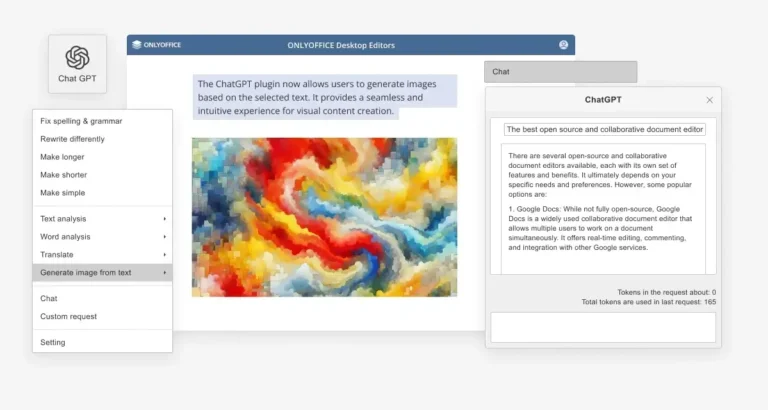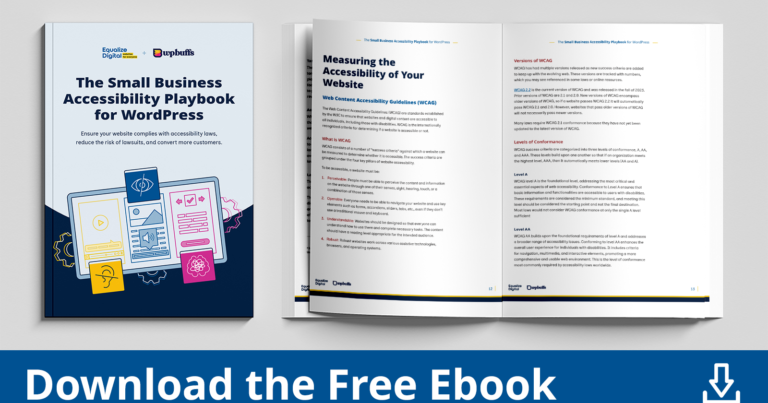Are you looking to extract structured data from websites efficiently and easily? Look no further than Scrapy, an open-source web crawling framework for Python.
In this article, we will provide an overview of Scrapy’s benefits, guide you through installation and basic concepts, explore advanced features like built-in services and extending functionality, discuss community support, compare Scrapy with competitors, dive into documentation, and highlight the latest updates.
Stay tuned to learn more about this powerful tool!
Key Takeaways:
Contents
- 1 Key Takeaways:
- 2 Introduction to Scrapy
- 3 Getting Started
- 4 Advanced Features
- 5 Community Support
- 6 Comparing with Competitors
- 7 Exploring Documentation
- 8 Latest Updates
- 9 Frequently Asked Questions
- 9.1 1. What is Scrapy and how does it work?
- 9.2 2. What are the advantages of using Scrapy for web crawling?
- 9.3 3. What type of data can be extracted using Scrapy?
- 9.4 4. How does Scrapy handle website updates and changes?
- 9.5 5. Is Scrapy suitable for beginners?
- 9.6 6. Can Scrapy be used for commercial purposes?
Introduction to Scrapy
Introduction to Scrapy provides an in-depth look at a powerful web scraping framework built in Python, known for its efficiency and flexibility.
Scrapy plays a pivotal role in the world of data extraction, offering a comprehensive set of tools and functionalities that make the process seamless. Its core features include a built-in XPath selector for easy navigation of HTML documents, powerful techniques for handling pagination and actions like form submission, and robust support for asynchronous networking. Compared to tools like Beautiful Soup, Scrapy stands out for its scalability and performance, allowing users to scrape large volumes of data efficiently. Its structured approach to web scraping, with a defined architecture and clear separation of concerns, makes it an attractive choice for projects of varying complexities.
Overview and Benefits
The overview and benefits of using Scrapy encompass its ability to interact with APIs, extract data from websites, mine valuable insights, crawl the web efficiently, and organize structured data.
Scrapy, an open-source and collaborative web crawling framework, provides developers with a powerful toolset for intricate data extraction tasks. Its advanced features enable users to navigate through complex websites, handle authentication, and scrape versatile data formats effectively.
With its flexible architecture, Scrapy offers a seamless solution for handling dynamic content, asynchronous requests, and complex data structures. By utilizing Scrapy’s robust selectors and pipelines, users can easily extract, clean, and store structured data from various web sources.
Getting Started
Embarking on the journey with Scrapy involves setting up the framework, leveraging CSS selectors for data extraction, and utilizing Python versions 2 or 3 for seamless integration.
Once you have Python installed, the next step is to set up a virtual environment to manage dependencies. You can create a virtual environment by running ‘python -m venv myenv’ in your command line interface. Activate the virtual environment by executing ‘myenv\\Scripts\\activate’ on Windows or ‘source myenv/bin/activate’ on Unix-based systems. This ensures that the Scrapy installation remains isolated from other Python projects.
With the virtual environment activated, you can proceed to install Scrapy using pip, Python’s package installer. Simply run ‘pip install scrapy’ in your command prompt to fetch and install the latest version of Scrapy from the Python Package Index (PyPI). Scrapy is known for its robustness in handling data-intensive scraping tasks, thanks to its scalable architecture and asynchronous networking capacity.
After the installation is complete, you can start a new Scrapy project by running ‘scrapy startproject myproject’. This command generates a standardized project structure with essential files for your web scraping endeavors. You can now navigate to the project directory and create a new spider, which is a Python class responsible for scraping data from specific websites.
Installation and Setup
To begin the Scrapy installation and setup process, users can create spiders to crawl websites, extract images, and gather data from e-commerce platforms like ShopClues.
After creating spiders, the next step involves setting up the required configurations to ensure efficient data extraction. Users can define the item fields they want to extract from the websites, specify the start URLs for the spider to initiate crawling, and activate the pipelines to handle extracted data. Incorporating XPath expressions allows users to target specific elements on the website for scraping.
Basic Concepts
Understanding the basic concepts of Scrapy involves grasping its role as an aggregator platform, its utility for data scientists, integration with APIs, and comparison to libraries like BeautifulSoup and lxml.
Scrapy, a Python library designed for web scraping, offers a wide range of functionalities that make it a preferred tool for data extraction tasks. One of its key advantages lies in its asynchronous nature, allowing it to handle multiple requests concurrently, significantly boosting efficiency.
Scrapy provides built-in support for various protocols and authentication methods, making it easier to interact with a multitude of web APIs seamlessly. This capability is particularly beneficial in data science applications where diverse data sources need to be accessed and synthesized.
Another distinguishing factor of Scrapy is its robust XPath and CSS selector functionalities, enabling precise data extraction from complex web pages with ease. When compared to BeautifulSoup and lxml, Scrapy excels in scalability and performance, making it a top choice for projects requiring extensive crawling and data aggregation.
Advanced Features
Exploring the advanced features of Scrapy reveals its capabilities in handling asynchronous requests, interacting with databases, parsing data formats like JSON and XML with precision.
In terms of asynchronous requests, Scrapy supports non-blocking requests, allowing for multiple requests to be processed concurrently. This enhances the efficiency and speed of web scraping operations. Scrapy seamlessly integrates with databases, enabling the storage of scraped data directly into databases like SQLite or PostgreSQL for easy retrieval and management.
Its advanced parsing capabilities extend to efficiently handling JSON and XML data. Scrapy’s built-in mechanisms simplify the extraction of specific data fields from complex structures, streamlining the scraping process for developers.
Built-in Services
Scrapy’s built-in services offer seamless support for exporting data in various formats like CSV, compatibility with Python 3, and integration with external libraries such as BeautifulSoup.
When utilizing Scrapy, users can efficiently export their scraped data to CSV files, a common and versatile format for data storage and analysis. The compatibility with Python 3 adds another layer of convenience and ensures that users can take advantage of the latest Python features while working with Scrapy. The interoperability with popular libraries like BeautifulSoup enhances its capabilities, enabling users to combine the strengths of multiple tools for robust web scraping solutions.
Extending Functionality
Extending Scrapy’s functionality involves leveraging APIs, integrating with databases like MongoDB, exploring additional web scraping libraries, and referring to comprehensive documentation for advanced usage.
In terms of extending the capabilities of Scrapy, it’s crucial to utilize APIs effectively. By connecting to external APIs, you can access a wide range of data sources, enriching the scraping process with valuable information. Integrating databases such as MongoDB further enhances the storage and retrieval of scraped data, enabling you to manage and analyze it more efficiently.
- Exploring alternative web scraping libraries broadens your toolkit and allows you to adapt to different scraping scenarios. Each library may offer unique features that can complement Scrapy or provide specialized functionalities.
- Making the most of detailed documentation is essential for maximizing Scrapy’s potential. Detailed guides, tutorials, and examples can help you overcome challenges, optimize performance, and implement advanced techniques effectively.
Community Support
The Scrapy community provides extensive support and resources for users, fostering an open-source environment, encouraging contributions, and offering assistance with API integration like Zyte.
Through the collaborative efforts of developers, data scientists, and enthusiasts, Scrapy has evolved into a versatile web crawling framework that enables users to extract valuable data effortlessly. The community-driven approach ensures that users have access to a wealth of knowledge, tutorials, and best practices. The support system not only aids in navigating technical challenges but also facilitates the sharing of innovative solutions and strategies. Whether it’s troubleshooting common issues or exploring advanced features, the Scrapy community stands ready to assist, making it a standout platform in the realm of web scraping.
Engagement and Resources
Engaging with the Scrapy community enables users to access valuable resources on platforms like GitHub, seek assistance on programming queries through StackOverflow, and stay updated with announcements via Twitter.
The Scrapy community on GitHub opens up a treasure trove of user-contributed code snippets, extensions, and detailed documentation, enableing individuals to enhance their web scraping projects with efficiency and precision.
In addition, the vibrant and active support channels on StackOverflow provide a forum for users to troubleshoot challenges, share best practices, and collaborate with fellow enthusiasts in real time, fostering a sense of community and learning.
Following Scrapy on Twitter ensures that users are promptly notified of new releases, updates, and relevant events, creating a dynamic and interactive environment for staying informed and connected within the web scraping ecosystem.
Comparing with Competitors
Comparing Scrapy with its competitors involves evaluating factors like web server compatibility, support for asynchronous clients, and distinguishing features from libraries like BeautifulSoup4.
In terms of web server interactions, Scrapy stands out due to its strong compatibility with various servers, allowing for seamless data extraction from different sources. On the other hand, competitors may struggle with certain servers, leading to limitations in scraping capabilities.
In terms of asynchronous client handling, Scrapy’s efficient design enables it to handle multiple requests concurrently, optimizing performance and speed. This feature gives Scrapy an edge over other libraries, including BeautifulSoup4, which may not offer the same level of asynchronous support.
Scrapy boasts unique features such as built-in support for handling robots.txt rules and a powerful XPath selector, providing users with more advanced scraping functionalities compared to alternative tools. These distinctive attributes make Scrapy a preferred choice for developers seeking a comprehensive web scraping solution.
Differences and Advantages
Exploring the differences and advantages of Scrapy over alternatives like BeautifulSoup, lxml, and Zyte reveals its superiority in API integration, data parsing, and functionality expansion.
Scrapy is renowned for its versatility in handling APIs efficiently, making it a top choice for web scraping projects. Unlike BeautifulSoup which primarily focuses on parsing HTML and XML, Scrapy offers a robust framework that enables scraping of dynamic content with ease.
One of Scrapy’s standout features is its extensibility, allowing developers to customize and extend its functionality through middleware and pipelines. This flexibility sets Scrapy apart from competitors like lxml and Zyte, making it ideal for complex scraping tasks that require seamless data extraction and processing.
Exploring Documentation
Navigating the extensive documentation of Scrapy provides users with detailed insights into its usage, features, and best practices, supported by an active community of contributors.
One key aspect of exploring Scrapy’s documentation is understanding its structure and organization. The documentation is meticulously categorized, making it easy for users to find information on various components, such as selectors, item pipelines, and settings.
Scrapy’s documentation is regularly updated by the community, ensuring that it remains relevant and up-to-date with the latest features and practices in web scraping. Users can benefit from the collective knowledge and experience of the community through the documentation’s collaborative nature.
Integrating API Key integration into Scrapy opens up a world of possibilities, allowing users to access restricted data sources and APIs seamlessly. Understanding the process of integrating API keys into Scrapy can significantly enhance the capabilities and efficiency of web scraping projects.
Navigating and understanding Scrapy’s documentation involves referencing tutorials, examples from platforms like Reddit and ShopClues, and exploring database integration with MongoDB for a holistic understanding of the framework.
When looking into Scrapy’s documentation, beginners might feel overwhelmed due to the vast amount of information presented. To efficiently navigate it, it’s advisable to start with the official Scrapy tutorial, which provides a comprehensive overview of the framework’s key concepts and functionalities. Real-world examples from popular platforms like Reddit and ShopClues can offer practical insights into how Scrapy can be used in various scenarios.
For those looking to enhance their skills further, exploring database integration with MongoDB can be highly beneficial. MongoDB’s flexibility and scalability make it a popular choice for storing and managing scraped data, seamlessly integrating with Scrapy for efficient data extraction and storage.
Latest Updates
Staying informed about Scrapy’s latest releases and enhancements ensures users are equipped with the most up-to-date features, bug fixes, and improvements, supported by announcements on platforms like Twitter.
Tracking Scrapy’s updates is crucial for developers looking to maximize the efficiency and effectiveness of their web scraping projects. With each new release, the Scrapy team addresses reported issues, implements enhancements, and introduces innovative features to streamline the data extraction process.
Keeping an eye on the Scrapy updates not only helps users stay ahead of potential bugs and errors but also allows them to leverage the latest technological advancements in the field of web crawling and scraping.
By incorporating feedback from platforms like Twitter, the Scrapy community actively contributes to the refinement and evolution of the framework, ensuring that it remains a top choice for web scraping enthusiasts.
Releases and Enhancements
Scrapy’s frequent releases and enhancements reflect its commitment to continuous improvement, with updates addressing user feedback, documentation enhancements, and contributions from the open-source community.
These regular updates not only keep Scrapy at the forefront of web scraping technologies but also showcase the dedication of Scrapinghub, the primary developer of the framework, towards refining the tool for users worldwide. Noteworthy improvements often include enhanced performance, increased stability, and bug fixes that cater to the evolving needs of developers. The documentation updates play a crucial role in simplifying the usage of Scrapy for beginners and seasoned users alike, offering comprehensive guidelines and examples.
Frequently Asked Questions
1. What is Scrapy and how does it work?
Scrapy is an open-source web crawling framework for Python that allows users to easily crawl websites and extract structured data from their pages. It works by sending HTTP requests to the target website, receiving the response, and then parsing and extracting the desired data.
2. What are the advantages of using Scrapy for web crawling?
Scrapy offers several advantages over other web crawling tools, such as its collaborative and open-source nature, its ability to handle large amounts of data and complex websites, and its support for various data formats. Additionally, Scrapy is highly customizable and efficient, making it a popular choice for data extraction projects.
3. What type of data can be extracted using Scrapy?
Scrapy can extract a variety of structured data from websites, including text, images, links, and HTML tags. It also has the ability to handle more complex data structures, such as JSON and XML, making it a versatile tool for web scraping and data mining.
4. How does Scrapy handle website updates and changes?
Scrapy has built-in mechanisms to handle website updates and changes, such as dynamic content and URL changes. It can detect changes in the website’s structure and automatically adjust its crawling and scraping behavior accordingly, ensuring accurate and up-to-date data extraction.
5. Is Scrapy suitable for beginners?
While Scrapy may seem intimidating to beginners, it offers extensive documentation and a supportive community that can help new users get started. There are also various tutorials and resources available for learning the basics of Scrapy and its functionalities.
6. Can Scrapy be used for commercial purposes?
Yes, Scrapy is open-source and free to use for commercial purposes. However, it is always important to check the website’s terms of use and copyright laws before scraping data for commercial purposes. Additionally, it is recommended to use Scrapy respectfully and ethically, and to follow any guidelines set by the target website.
![21 Top Slack Alternatives for Team Communication [Free & Paid]](https://charliesgarage.com.au/wp-content/uploads/2025/05/21-top-slack-alternatives-for-team-communication-free-paid-768x580.png)




